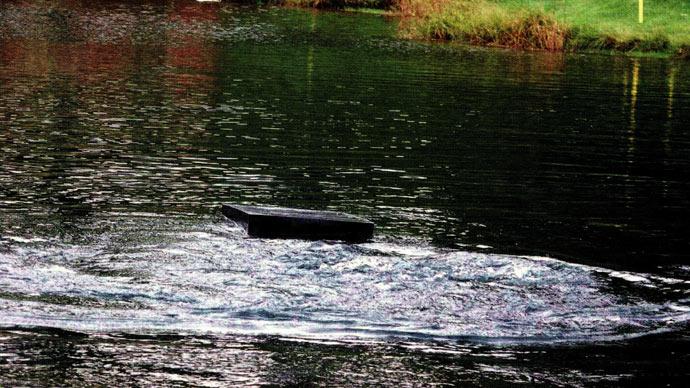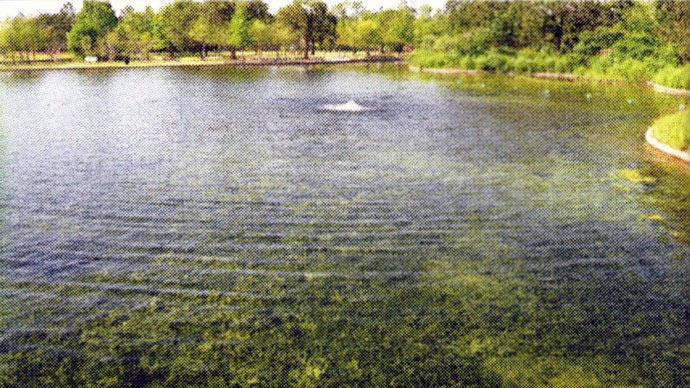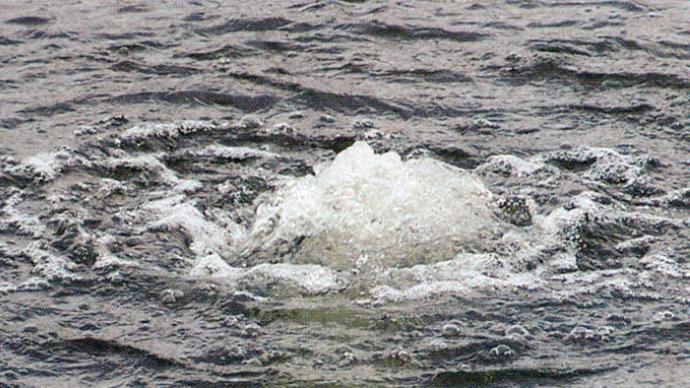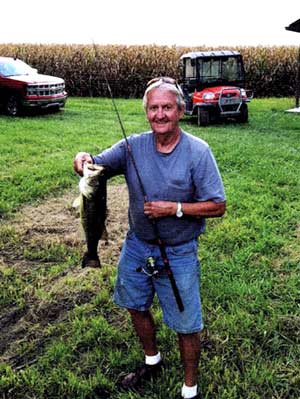
When Wendell Gilbert worked with civil engineer and pond builder Joseph Murphy in 1957 to design and build his pond near the Monroe township in Howard County, Indiana, he'd probably never heard the word eutrophication.
He had no reason to.
There was a government program back then that subsidized pond building under the right conditions. So Mr. Gilbert decided he'd investigate that opportunity.
He wanted to dam up a heavily wooded gulley on the farm to capture water. Just a pond, maybe an acre-plus. Fix erosion in an area he couldn't farm, have a pond for water storage, catch a few fish, add some beauty, and maybe even a place for the kids to cool off on a hot summer day. Win-win.
The dam was built using the same methods used today. Select the site, remove topsoil, dig a core trench, backfill with 6-8" lifts of clay, compact, and build a dam. Crown the jewel with topsoil, and, voila, there's a pond in an otherwise unused area.
Like many northern and Midwestern ponds, this one received much of its water via field tiles and direct rain runoff. For those who've not heard of field tiles, they are subsurface drainage systems to relieve agricultural lands from standing water beneath the surface. With abundant rains on crops and thick, heavy clay inches under the topsoil, farmers don't want water standing in root systems below the surface. Field tiles were installed years ago to ensure farmland drains into the creeks and gullies so crops grow better. Think French drains.
With the Gilbert Pond, the good news was its ability to stay full much of the year. The bad news? Guess what comes with field drainage tiles and runoff from farm fields for 64 years? Nutrients and siltation. Lots of nutrients and silt.
A pond knocking on the door of social security age, in farm country, should expect to be way beyond its full, healthy years.
Gilbert Pond is that pond. We've all seen these ponds, and I bet some pondmeisters reading this story have owned one...heck may still have it.
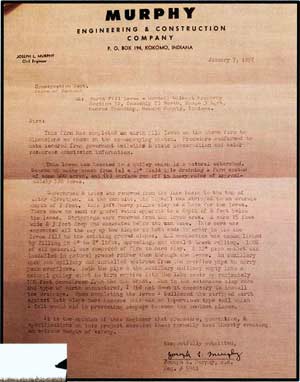
Wendell's son, Joe, purchased the farm in 1974 when the pond was a teenager. Over the years, the pond continued to age as nature did what nature does.
Eutrophication is the term lake people use.
When a pond is first built, it begins a journey toward its death. "Death" in pond talk means it gathers nutrients, silt, and soil. It shrinks, becomes surrounded with cattails and bog plants, becomes much shallower, the water is super-rich with nutrients, pond size shrivels, and becomes a marsh on its way to becoming land again. That process may take 25 years. It may take two hundred.
The Gilbert Pond reached hyper-eutrophication about ten years ago. What that means to us is soupy green water, musty odors, blue-green algae...and regular fish kills.
Joe was tired of the fish kills—he wanted a healthy pond teeming with fish and much cleaner water. He tried watching his bass and 15-inch yellow perch gasping for air at the surface.
He rang Matt Rayl, with American Pond Management, near Russiaville, Indiana.
Matt started coming up with some ideas on how to clean it up. "Do you have electricity near the pond?" Joe admitted, "No, we don't" Matt was thinking about aeration as Joe was figuring out how to keep a new influx of fertile water at bay and also rid the pond of bottom water.
As they were thinking through the best ideas, Joe figured out how to divert water from field tiles and skirt the pond unless he needed that water. He also installed a bottom-water release pipe to relieve the pond of its anoxic water below the shallow thermocline.
Matt took a different tact. He called John Redd with Outdoor Water Solutions. OWS had hit the market with a solar-powered aeration system. Matt, an expert in the field of aeration, has long wanted to prove whether intermittent aeration could be effective.
So did John Redd.

Why not try it here, in a pond many might consider the worst of the worst in terms of water quality and overall eutrophication?
Matt's goals were to see if alternative energy aeration could destratify a lake, eliminate fish kills and get oxygen to the sediment/water interface on the pond bottom to expedite the breakdown of organic matter.
Joe's goals were to eliminate fish kills and clean up his water.
Matt also wanted to see if there were any installation, operation, and durability hurdles.
John Redd wanted a controlled study to prove intermittent aeration's effectiveness. He said, "There is a strong perception in the industry that unless someone has 24/7 aeration, aeration will not be effective."
Here's where science entered the project. The lake was measured at 1.6 acres, but only 1.2 is deeper than four feet. The pond is surrounded by trees, with annual gifts of hundreds of pounds of leaves. The team designed the system for this particular pond.
If intermittent aeration could work on this pond, it could work on any pond. Upon Matt's advice, Joe bought an oxygen meter and began daily testing at two-foot intervals all the way to the bottom. He kept good records. OWS's Ultimate 5 system was selected. It has a 1/2 horsepower motor and runs 4.3 cubic feet per minute (cfm) at 5 psi with a 4-panel solar array and two diffusers. It took about half a day to install the system, and that was with one of the panels installed backward and then corrected.
The weather was recorded, and run-time duration per day was estimated best they could. Maximum run time was 11 hours during peak times, maybe six hours during cloudy days. The average was 8.2 hours per day.
Oxygen was measured daily (not always at the same time) and logged into a spreadsheet from 14 June until 4 October.
Results?
The team calculated that the aeration system ran 2,115.8 cfm per day on average.
Intermittent aeration did eliminate thermal stratification, but oxygen did not get to the sediment/water interface due to the high oxygen demand. Biological Oxygen Demand was way too high, consuming it faster than it could be pushed down.
Dissolved oxygen levels hovered around from above four feet and 2.73 below four.
That lower amount is lethal to some species and marginal to others. The bottom two feet didn't exceed 2 ppm.
Their conclusions? Yes, intermittent aeration did eliminate the thermocline— thermal destratification. Yes, it prevented fish kills that summer and for three consecutive years. But that last goal proved elusive—no oxygen at the bottom.
You can see the graph, where there were a couple of hairy days where things could have gone south with oxygen levels plummeting near lower lethal.
Joe said, "No doubt, with that year's weather, I would have lost my fish." He followed, "No wind, corn fields to the side, we've had no dead fish, and the combination of solar aeration, moving water off the bottom, and diverting drain tiles have been our ticket to success."
Now, three years after the experiment, Joe says, "Water is much clearer. We no longer have the pea soup and musty odors. We have less algae altogether, from green water to that wispy kind of filamentous algae." He's confident they've extended the life of his pond.
Matt said, "This pond and its extraordinarily high amount of organics didn't allow for nutrient binding on the bottom, but we were happy to see direct benefits from intermittent aeration. In lakes and ponds that don't have such a high oxygen demand at the bottom, we could expect to see even better results."
Most people purchasing aeration systems need to understand that they need adequate cubic feet per minute circulation to eliminate stratification and keep dissolved oxygen levels up. It's even more critical for intermittent aeration such as wind and solar.
John's parting comments, "To my knowledge, this was the first study that looked at using solar aeration and if it would accomplish these basic goals. Matt and I believe intermittent aeration can work and help out most ponds, especially ones that aren't heavily stocked trophy bass pond and/or highly eutrophic, although results from this particular hyper-eutrophic pond were still positive. It's imperative the aeration system be properly sized for the pond."
They are all happy that this geriatric pond has a new breath and is destined for more good years and some much happier fish.
Reprinted with permission from Pond Boss Magazine

